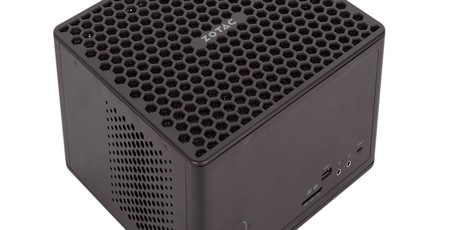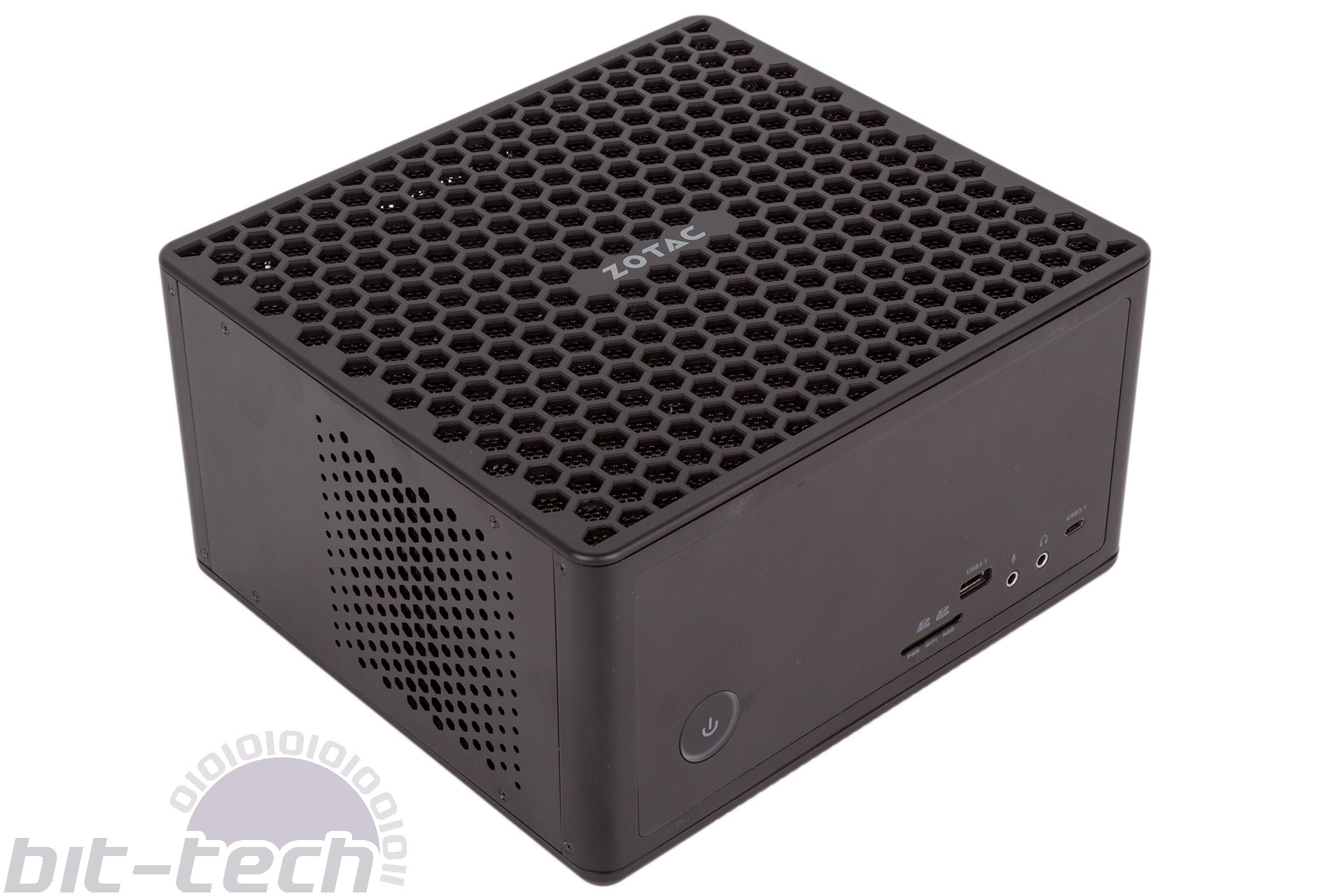Zotac Zbox Magnus ER51060 (Barebones) Review
January 29, 2018 | 17:00

Performance Analysis
We don’t have many suitable systems to compare this PC to, but the PC Specialist Enigma Elite is pretty useful. It is a full desktop system rather than a mini-PC, but at £1,000, it costs similar to what you could expect to pay overall once you fill the Zbox with a decent capacity SSD, some memory, and a copy of Windows 10. We’ve foregone storage testing here, since that will be almost entirely dependent on the exact storage you install.Deus Ex quite neatly highlights the need for a larger frame buffer. The 1080p Ultra test is enough to cripple the GTX 1060 3GB card in the Zbox, whereas the GTX 1060 6GB in the PC Specialist system gets through the test with decent frame rates. Dropping to High fixes the issue, and in the synthetic tests the Zbox is only 11 percent behind on average, which is much more in line with the difference we’d typically expect from these two cards. However, memory demand in games still seems to be on an upward trend, which again draws into question how future-proof this system is.

In the CPU-bound workloads, the PC Specialist system is again faster. In fairness, it uses a pricier CPU, the Intel Core i5-8400, which has two more cores than the Ryzen 5 1400 (two less threads, though). Even so, the difference is rather large.
With peak power consumption of 200W, the Zotac Zbox Magnus ER51060 certainly isn’t a major threat to your energy bill, and the idle reading of just 35W is promising as well. Temperatures remained in check during stress testing, with the CPU peaking at 76°C and the GPU at 66°C. Unfortunately, noise is less of a strong suit. The problem isn’t so much when the system is under load; the CPU and GPU fans do spin up to compensate for the higher temperatures, but not to silly levels. However, even at idle there is still a fair amount of noise emanating from within the Zbox. If it were tucked away under a TV (quite likely, to be fair), it probably wouldn’t be much of an issue, but we were still expecting less noise, especially given how low power requirements are when the system isn’t stressed.
Conclusion
We don’t want to get too hung up on the performance results, as we’re comparing a desktop system with a mini-PC. Even with this caveat in mind, however, we’re not really convinced of the Magnus ER51060’s utility. Without overclocking, the Ryzen CPU loses much of its value, while the GPU we feel is a poor choice – the GTX 1060 6GB would have been a far better choice, even if it added to the cost. The GTX 1070 version of this Zbox could be a mean little gaming machine, but it’s hard for us to say for sure, as there’s a chance that it throttles or gets too loud. It does look like better value, though, especially with GPU prices being what they are right now.
The design of the Zbox could be improved, as there’s wasted space inside, although admittedly it doesn’t get too hot and still isn’t exactly huge. It does at least have good connectivity, and it’s very easy to add your own memory and storage – very important for any barebones PC. It’s just a shame that the core hardware that you cannot change isn’t really optimal.
A small form factor Ryzen system is certainly appealing on paper, but we feel that in the pursuit of a small footprint, Zotac has sacrificed a bit too much. If it were us, we’d stick to a slightly larger but more powerful (i.e. overclockable) and quieter mini-ITX system to get the most out of Ryzen. Meanwhile, if a low footprint is your biggest concern for your next HTPC or gaming rig, the better efficiency of Intel CPUs means it’s probably worth looking at solutions that use those.

MSI MPG Velox 100R Chassis Review
October 14 2021 | 15:04







Want to comment? Please log in.